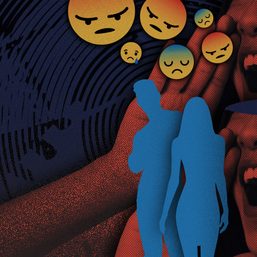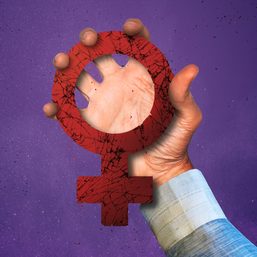SUMMARY
This is AI generated summarization, which may have errors. For context, always refer to the full article.

This study was conducted with support from Internews. It uses Internews’ Information Ecosystem Assessment (IEA) methodology, but also takes off from data gathered through Sharktank, a database developed by Rappler to capture messages and content distributed in known public social media spaces in the Philippines.
On May 5, 2020, ABS-CBN, the Philippines’ leading radio and television network, was forced to go off air after its franchise expired. (The Philippine House of Representatives eventually rejected the bill that would have allowed it to operate for another 25 years.) This resulted in loss of jobs for thousands of media workers employed and contracted by the network. It reduced Filipinos’ access to information in many remote areas and made ABS-CBN refocus distribution on its digital resources.
Even before the shutdown, however, the Philippine media environment had already been in a state of flux for years, with the relentless growth of the mobile and digital space. This development affected not just media consumption, but also the way Filipinos interacted with the information ecosystem. The COVID-19 pandemic forced people to rely even more on digital, not only as a source of information, but also as the primary mechanism for connecting to the world of work and learning.
On average, across Southeast Asia, 1 in 3 (33%) of all digital service consumers are new to the service due to COVID-19, according to Google Temasek’s e-Conomy SEA 2020. Around 16 million new user accounts were created from the Philippines as of January 2021, making it the 3rd top country globally in terms of largest absolute growth, according to digital media agency WeAreSocial. Overall, WeAreSocial reports that there are already 73.91 million internet users and 89 million social media users in the Philippines as of January 2021.
As social media usage surged, newsrooms and journalists found themselves besieged by an unprecedented level of online harassment. The news groups that have been the primary target of attacks, ABS-CBN and Rappler, were the hardest hit in terms of drop in trust ratings. Both newsgroups fell by 4 points in their trust scores, according to the Reuters Digital News 2021 report, and yet in terms of reach, they were in the top 4, showing exactly why they were targeted.
Given the growing dominance of digital media, this research deep-dived into the dynamics of this space to present a more robust understanding of the flow of information and disinformation in this new media landscape. Worth noting are the following:
- Unlike in traditional media, digital media audiences are not passive recipients or spectators. Even ordinary people become content creators themselves. This blurs the boundaries between “supply side” (content creators) and “demand side” actors (content consumers). Actors in this space do not even have to be real-world entities and personalities, as evidenced by the widespread use of fake accounts and anonymously managed social media assets.
- The ubiquitous use of smartphones, digital social networks, and machine intelligence – described by MIT Professor Sinan Aral as the technology trifecta – fuels dangerous trends: personalized mass persuasion, hypersocialization, the tyranny of trends. The level of collection and use of behavioral data by these technologies make them potent behavioral modification tools.
- All of the above make social media fertile ground for disinformation techniques, such as astroturfing as well as the Russian “Firehose of Falsehood” propaganda model, characterized as high-volume and multichannel; rapid, continuous, and repetitive; lacking commitment to objective reality; and lacking commitment to consistency.
Overall Findings
- Already addicted to social media, Filipinos became more deeply immersed in the internet due to the pandemic.
For over half a decade now, Filipinos have topped the rest of the world in terms of time spent on the internet and social media. This level of immersion in digital media further deepened during the pandemic, after quarantine restrictions forced people to study and work remotely.
Most of the respondents in Rappler’s surveys have been using social media more because of the pandemic. Majority (60%) said they’ve been spending more than four hours on social media a day since the pandemic. Only 18% claimed to have already been spending the same amount of time on social media prior to the pandemic.
In January 2021, less than a year after the lockdowns were imposed, data published by digital media marketing agency WeAreSocial indicated that Filipinos on average were spending at least one hour more online – an average total of 10 hours and 56 minutes – as compared to the amount of time they had been spending online in January 2020 (9 hours and 45 minutes). This is nearly four hours more than the global average of 6 hours and 54 minutes on the internet. Time spent by Filipinos on social media also increased slightly to 4.15 hours as of January 2021 from 3.53 hours as of January 2020.
- At least 1 in every 3 Filipino internet users is new to digital, is potentially unfamiliar with how it works, and vulnerable to disinformation and online manipulation techniques.
In the surveys conducted by Rappler, more digital immigrants say they are unfamiliar with how social media platforms work as compared to digital natives.
Among other things, some respondents in FGDs conducted as part of the study indicated that they use comments as reference for judging the veracity of information. This indicates a lack of familiarity with astroturfing, a common disinformation technique. Astroturfing is a practice where disinformation networks use numerous fake accounts to create the impression of widespread grassroots support for a policy, individual, or product even when little exists. In the past years, Rappler has found ample evidence of astro-turfed messages in the comments sections of news websites and on Facebook in relation to the issues covered by this study .
- News organizations are still among the most followed information sources online. But they are increasingly drowned in social media noise.
While the top media organizations in the country are still among the leaders of the pack in terms of following on social media, they no longer dominate the information ecosystem. Competition is no longer limited to other news organizations.
The scatter plot graph below illustrates this battle for eyeballs in the new digital information ecosystem. The data compares interactions and page likes for Facebook over 30,000 pages related to the Philippine information ecosystem that Rappler discovered through Sharktank. The list includes news organizations, civil society groups, brands, government pages, meme and viral content pages, and various other social media information sources. Nodes to the upper right are pages that top the rest in terms of combined interactions and page likes. The red nodes are newsgroups.
- Trustworthiness is the primary consideration in following groups, pages, and channels on social media. But entertainment value and agreeableness are also major considerations, making audiences vulnerable to sources that deceptively use celebrity content to build online following.
Most respondents in Rappler’s website survey and the local communities survey said they generally follow accounts that they deem trustworthy. A significant segment, however, also considers entertainment value and agreeableness as major considerations in following a social media asset.
This could be a concern because, while there are clearer lines between news and entertainment content in traditional media, the same rule often gets blurred in digital. A recent report that Rappler published concerning disinformation on YouTube exposed how Showbiz channels shifted focus from celebrity gossip to hyper-partisan content, many of which included disinformation.
- Majority (78%) of survey respondents say they can distinguish between real news and “fake news,” but focus group discussions (FGDs) reveal that some believed previously debunked claims.
Respondents in FGDs conducted as part of this research were able to cite specific claims the Rappler researchers described in the section on information cascades that had already been debunked by independent fact checkers. These include the claims around Martial Law, ABS CBN’s alleged violations, and content about the drug war.
Most of the FGD respondents indicated they were aware the claims were dubious or untrue. Some, however, appeared to believe the claims they saw. The political belief of respondents, as indicated in their views with respect to the three issues covered by this study, appear to be a factor in their susceptibility to believing particular claims.
- There are similarities between disinformation in the Philippines and the “Firehose of Falsehood” Russian propaganda model.
Many of the information cascades monitored by Rappler follow distinctive characteristics of the Russian firehose of falsehood propaganda model: high volume and multi-channel; rapid, continuous, and repetitive; lacking in commitment to objective reality; and lacking in commitment to consistency.
This is particularly true in the case of revisionist narratives related to Martial Law and the Marcos achievements, which were served repetitively to hundreds of groups and pages, including pages supposedly tackling “real Philippine history.” The same is true for messaging attacking the press and promoting the drug war. In many instances, FGD respondents said it is hard for them to remember or identify the original source of these claims, given the number of times the content has been shared and reposted.
- Persistently seeded metanarratives against mainstream media cause audiences to follow hyper-partisan social media influencers who are perceived as “alternative information sources.”
Some respondents said they follow pro-administration social media influencers because news organizations don’t cover everything that’s happening. This response echoes one of the metanarratives that were repetitively raised against news organizations as described in the section of the information cascades. Media groups are typically attacked for supposedly “hiding the truth” and for not reporting on supposed accomplishments of the current administration as well as of the Marcos regime.
- Government and politicians are among the gainers in the digital space. In some cases, they have edged out mainstream news organizations and media as the trusted sources of information.
Notably, some FGD participants expressed trust in information coming from government officials, generally saying that so long as information comes from official sources, it is enough. Amplified by the platforms, this blind trust in government online sources makes audiences vulnerable to disinformation because Philippine state actors have proven to be behind a number of disinformation cascades. In its most recent takedown, Facebook identified officials of the Philippine military as the administrators of dubious pages used to sow false claims and attack activists. Rappler’s investigation, which led to the takedown, revealed that these dubious pages were being amplified by official police pages.
- Through incoherent policies, neglect, and focus on engagement, platforms allowed disinformation to proliferate while diminishing the reach of news media.
Measures adopted by the platforms during the pandemic, purportedly to counter misinformation about COVID-19, introduced friction in the sharing of all stories (including those from verified mainstream media) if they mention COVID-19 and related keywords. This, however, affected the reach of all news coverage of the pandemic, including those related to concerns about the government’s inefficiencies in responding to the pandemic as well as issues concerning its use of public funds. These measures, in effect, diminished the capability of news organizations to provide checks and balances to government messaging in the space during a crisis.
The graph below shows cumulative growth of government pages versus media pages during the pandemic. Interaction rate translates to how engaging the posts of the pages are, while page likes is a rough approximation of the pages’ audience that receives regular updates. Sudden spikes in interaction rates but with low page like growth may be attributed to occasional viral posts reaching a broader audience.
Conclusion and recommendations
Without a doubt, digital media will have a significant influence on the Philippine May 2022 elections. While new COVID-19 cases are dropping and quarantine rules are easing up, the emergence of new variants means that campaigning will largely be online and on social media.
Rappler lists critical action points that various sectors of society need to adopt to ensure integrity of the May 2022 elections and to address democratic decay caused by disinformation.
Support and amplify public interest journalism and credible news sources
Persistent attacks have clearly crippled the Philippine press. Critical action needs to be done in this respect. Some recommendations in relation to this:
- Platforms, civil society, and the academe should promote credible news sources that can serve as key sources of verified information about candidates and the electoral process.
- It is important to support efforts around media and information literacy and fact-checking. A significant part of efforts should go into helping the public understand the role independent journalists and newsrooms play in a healthy information ecosystem as well as the watchdog role they play in vibrant democracies. This is critical to rebuilding trust.
- Support also needs to go into exploring further action, including available legal options in relation to protecting journalists against online attacks. This needs to go beyond training on digital security and needs to take into consideration the most urgent threat: attacks against reputation.
- Support should also go to funding investigations and in-depth reporting around gut issues that will serve to illustrate to audiences the value of an independent press in a democracy.
Promote election integrity, enforce transparency and accountability
For the 2022 elections, we reiterate this list of recommendations for the Commission on Elections (Comelec) and election watchdog groups:
- In relation to the elections, campaigning in the Philippines is governed by the Fair Election Act. Traditional media, as well as their online properties, are required to submit reports about candidate placements in their platforms. The Comelec needs to take into consideration online dimensions of these in regulations while being cognizant of the unique dynamics of social media highlighted in this report.
- The Comelec should release candidate-disclosed lists of pages and groups officially associated with the candidates themselves. Content in influencer pages outside these official lists should be monitored and tracked in the same manner as traditional media assets are monitored and tracked.
- Campaigns on social media, as established, are not limited to traditional ad placements, therefore transparency should not be limited to transparency in relation to data on advertising placements. Platforms need to be compelled to disclose more while respecting data privacy.
To address astroturfing and the firehose of falsehood propaganda model, it is important for data pertaining to comments in pages and community hubs with significant online reach to be visible for study and investigation. Here it becomes important to consider the dual nature of the social media platforms: they are not merely infrastructure for private communications. Public pages, community hubs, and even social media influencer accounts which have significant reach should be considered public broadcasting mechanisms, subject to standards of disclosure required of mainstream media.
- Given that the Comelec and most watchdog groups do not have the capacity to monitor these new public spaces, support must be given to a new breed of watchdogs that can help monitor these spaces.
- Conversely, newsrooms, fact-check organizations, and the academe need to collaborate more effectively in a way that sends platforms actionable data around disinformation narratives and disinformation actors.
Treat disinformation as a form of electoral fraud
- It is important to publicly repudiate candidates who use disinformation tactics to win. Watchdog groups have said that fake news should be considered as a form of electoral fraud. The Comelec has also said that spreading fake news about the polls is an election offense.
- Enforcement of this policy needs to take into consideration the fact that most black propaganda is circulated by false accounts or anonymously-managed pages. Particularly in relation to black propaganda and troll farms, candidates and watchdog groups should consider engaging lawyers who can file the necessary legal requests with respective platforms and authorities as necessary to unmask personalities behind troll accounts responsible for dubious pages sowing disinformation.
Address algorithmic amplification of disinformation and hate
Advocacy groups need to recognize that the key to solving the disinformation problem is the social media platforms themselves. Algorithmic amplification of lies is at the heart of the disinformation problem itself. The solution partly lies in addressing malign algorithms that amplify hate and disinformation for the sake of increasing time on site.
We are in a state where institutions and advocates could leverage evidence of the online wasteland of the past six years to push hard for reforms and impactful actions on the part of social media giants like Facebook and YouTube.
- To address algorithmic amplification of disinformation, the Comelec, the media, and watchdogs should collectively engage with social media platforms for structural reforms between now and May 2022.
- These sectors should also be actively engaging with lawmakers to introduce needed laws that will allow for more transparency and accountability on the part of social media platforms that operate within the Philippine territorial jurisdiction.
Forge a pact against disinformation
Ultimately, the buck stops with the candidates and political parties. Beyond asking candidates for their stand on disinformation, the media should hold candidates accountable for both disinformation that their respective camps circulate and propaganda that benefits them.
The media and advocates should ensure that disinformation becomes an election issue raised with candidates in various stories, debates, fora, and other venues during the campaign season.
Beyond monitoring the actual voting and the vote count, these are critical steps in promoting free and fair elections in May 2022, especially since we now live in a world dominated by social media, also a world where poll outcomes can, unfortunately, be shaped by technology.
– Rappler.com
Add a comment
How does this make you feel?



![[ANALYSIS] Cybermisogyny violates human rights](https://www.rappler.com/tachyon/2022/06/Cyber-misogyny-human-rights.jpeg?resize=257%2C257&crop_strategy=attention)
![[ANALYSIS] Building Narratives: stories of greatness and windmills in Marcos Jr.’s campaign video](https://www.rappler.com/tachyon/2022/05/Narratives-marcos-windmills-May-18-2022.jpg?resize=257%2C257&crop_strategy=attention)




![[OPINION] You don’t always need a journalism degree to be a journalist](https://www.rappler.com/tachyon/2024/06/jed-harme-fellowship-essay-june-19-2024.jpg?resize=257%2C257&crop=287px%2C0px%2C720px%2C720px)





![[OPINYON] Tungkol sa naging viral na social media conjecture](https://www.rappler.com/tachyon/2024/07/thought-leaders-conjecture-07262024.jpg?resize=257%2C257&crop_strategy=attention)
![[DECODED] The Philippines and Brazil have a lot in common. Online toxicity is one.](https://www.rappler.com/tachyon/2024/07/misogyny-tech-carousel-revised-decoded-july-2024.jpg?resize=257%2C257&crop_strategy=attention)



There are no comments yet. Add your comment to start the conversation.